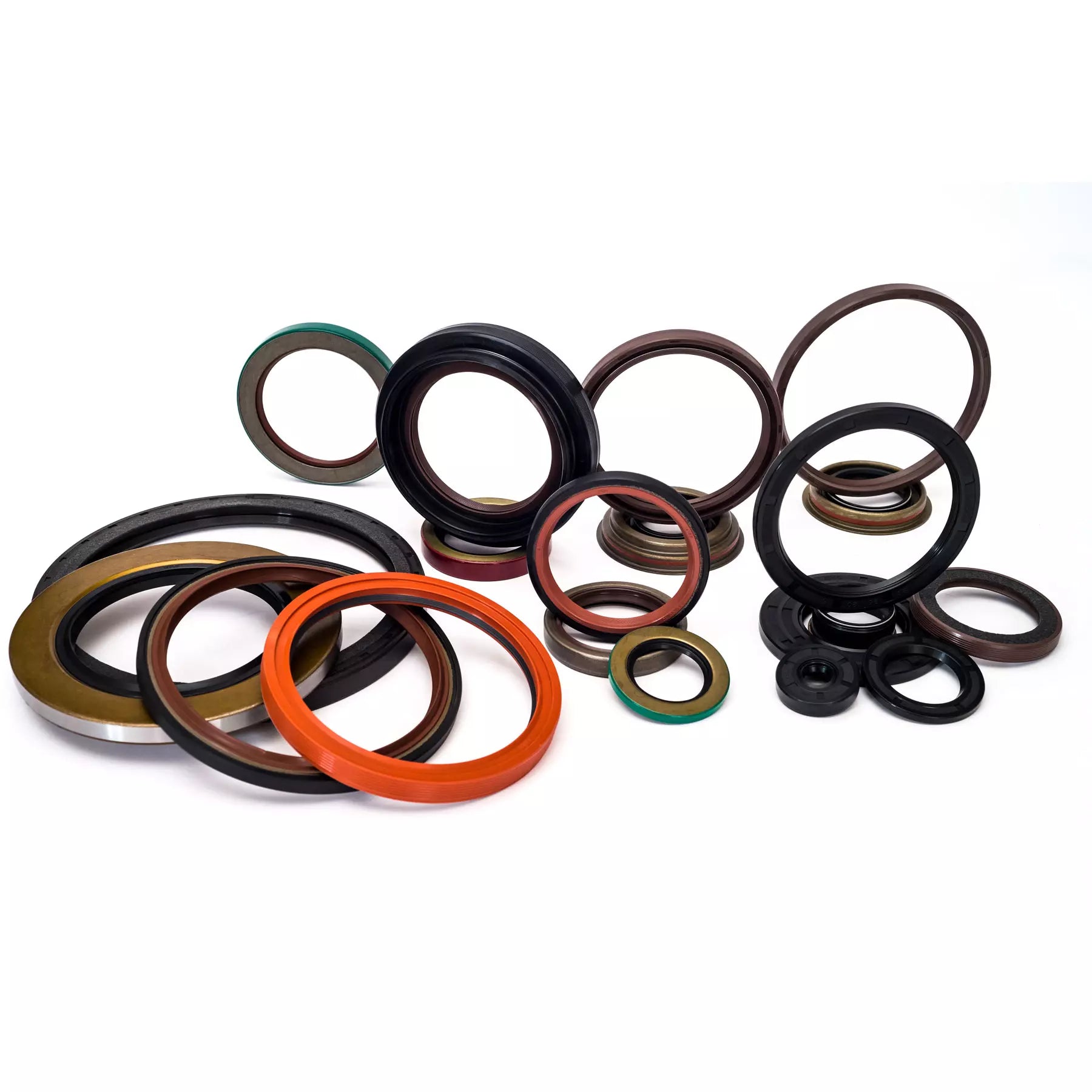Temperature range diagram of O-ring material
Select O-ring according to temperature
As an engineer, you understand the importance of selecting the correct seals for your specific application. However, the selection process may be challenging, with too many options and factors to consider.
One way to simplify this process is to first consider the temperature range. Taking this as the first step can help you narrow down your selection and guide you to find the most suitable O-ring for your application.
To assist you with your search, we have compiled some key factors regarding temperature and its role in the selection process of seals.
The role of temperature in the selection process of O-ring
Temperature plays an important role in the performance and lifespan of O-rings. It directly affects the elasticity and sealing performance of materials, as each material functions within a specific temperature range based on its unique chemical composition. Exceeding this range may result in material degradation and seal failure.
The temperature range refers to the temperature range within which the O-ring can effectively operate. This range largely depends on the material used to manufacture the O-ring.
For example, nitrile O-rings are a commonly used material called NBR or nitrile rubber, with a universal temperature range of -31 º F to 248 º F. Nitrile is your benchmark until you understand the specific conditions of the medium and the actual temperature range.
For more extreme temperatures, fluorocarbon compounds, also known as Viton ® O-rings may be your better choice as they can withstand temperatures up to 400 º F.
Other materials, such as PTFE and silicone, are also common, depending on your application needs. Each material is designed for a specific function, so starting from the temperature range can help you narrow down your selection and make it easier to choose the right seal.
The following is a quick reference chart for comparing O-ring materials and their approximate temperature ranges:
|
O-Ring Temperature Range |
O-Ring Material |
|
15ºF to 450ºF |
AFLAS® |
|
- 75ºF to 250ºF |
Butyl |
|
- 70ºF to 250ºF |
Ethylene Propylene (EPDM) |
|
- 15ºF to 400ºF |
Fluorocarbon (Viton®, FKM) |
|
- 100ºF to 350ºF |
Fluorosilicone (FVMQ) |
|
- 23ºF to 300ºF |
Hydrogenated Nitrile (HNBR) |
|
- 30ºF to 250ºF |
Nitrile (NBR, Buna-N) |
|
- 60ºF to 225ºF |
Neoprene |
|
- 15ºF to 608ºF |
Perfluoroelastomer (FFKM) |
|
- 5ºF to 350ºF |
Polyacrylate |
|
- 40ºF to 180ºF |
Polyurethane (AU) |
|
- 175ºF to 450ºF |
Silicone (VMQ) |
|
-425ºF to 450ºF |
Teflon® (PTFE) |
|
10ºF to 400ºF |
FEP |
|
10ºF to 500ºF |
PFA |
Other key factors for selecting O-rings
Although temperature is a key factor, other factors such as medium, application type (static or dynamic), and pressure also play important roles in the selection of O-rings. These factors interact with temperature and affect the selection of the correct sealing solution.
Media. The fluid or gas (or medium) with which the seal will interact will affect its performance at a given temperature. The compatibility of different materials with each medium varies. When you understand the media in the application, you can quickly narrow down your material selection range.
Application type. The static application where the seal is located in the groove and does not move has different requirements from the dynamic application where the seal moves. By considering applications, you can predict wear and eliminate more material choices.
Pressure. Pressure conditions can also affect the performance of seals. High pressure can cause compression or deformation, while vacuum conditions can lead to gas permeation. Ensure that the seal you choose can handle the pressure conditions required for your application.
Simplify O-ring selection using temperature
After helping engineers find suitable sealing solutions for over 50 years, we recommend following the following steps, starting with temperature, to make your selection process faster and easier.
Define your temperature range. Determine the minimum and maximum temperatures that the seal will be exposed to in order to narrow down your selection range.
Consider the medium, application type, and pressure. Understand the conditions that seals will face and the functions required to achieve maximum performance.
Choose your materials. Once you narrow down your selection range, you can decide your materials based on price and preferences.
Verify your selection. It is important to simulate or test materials in real environments to ensure that you have a sealing solution that suits your needs.
Conclusion
Choosing the appropriate sealing solution is a complex process that requires a comprehensive understanding of the application conditions and all their factors.
Although temperature is important, it is not the only factor to consider. In order to achieve optimal performance and longest lifespan from seals, it is important to consider all relevant factors. By adopting a comprehensive approach, you can find a sealing solution that suits your needs.
If you need help navigating this process to find the seal that suits your project, please consult DMB seal team. We have over 15 years building relationships with global seal manufacturers, providing you with thousands of types of seals, gaskets, O-rings, and other special products suitable for any application.

